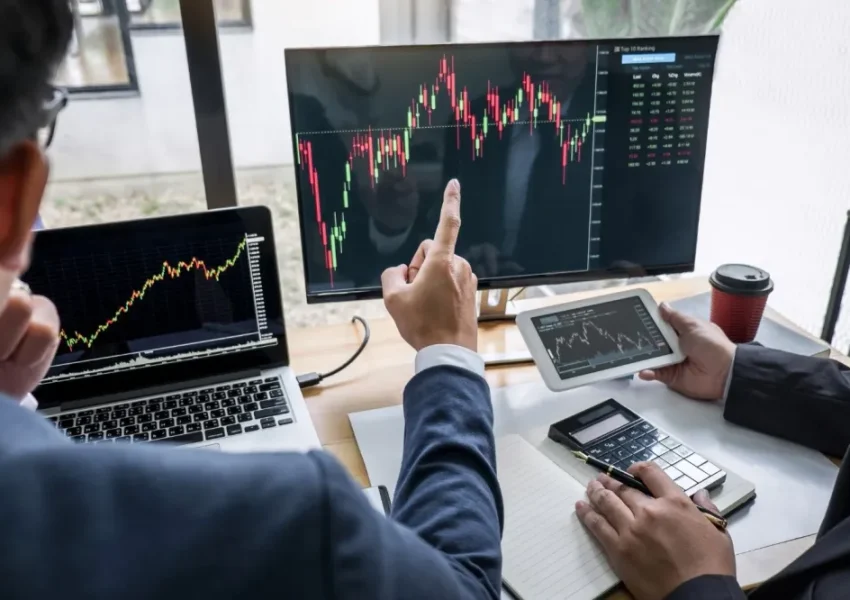In the ever-evolving world of financial trading, Gulf-based investors are showing increasing
interest in multi-asset Contracts for Difference (CFD) portfolios. These instruments offer an
efficient way to speculate on price movements across various asset classes without owning
the underlying assets. With access to global markets and the ability to use leverage, CFD
trading has become especially appealing to high-conviction traders seeking opportunities
beyond regional limitations. A high-conviction approach involves making trades based on
strong research and a deep understanding of the market, often with a willingness to hold
larger positions or longer time frames. For Gulf traders, this strategy pairs well with the
diversified nature of multi-asset CFD portfolios, providing flexibility to capitalise on market
trends, economic shifts, and geopolitical developments.
Understanding Multi-Asset CFD Portfolios
A multi-asset CFD portfolio is essentially a collection of CFD positions across different asset
classes. This includes equity indices, individual stocks, commodities like oil and gold, major
forex pairs, and even digital assets such as cryptocurrencies. The key advantage lies in the
ability to gain exposure to these diverse markets through a single trading platform.
Unlike traditional portfolios that require substantial capital and ownership of assets, CFD
portfolios allow traders to take long or short positions with a fraction of the capital. This not
only amplifies potential returns but also enhances liquidity and responsiveness to market
movements. For Gulf investors who wish to hedge exposure to oil price fluctuations or
speculate on US tech stocks, multi-asset CFD portfolios open up a world of strategic
possibilities.
What truly sets these portfolios apart is their capacity for risk diversification. Rather than
relying on one asset class, such as equities, traders can allocate risk across uncorrelated or
inversely correlated instruments. This approach can help mitigate losses during volatility in a
single market and provides more consistent opportunities for profit. Check out ADSS for
more information.
Key Market Dynamics in the Gulf Region
Trading strategies in the Gulf are uniquely influenced by regional market dynamics. One of
the most dominant factors is the price of crude oil, which continues to be a major driver of
economic performance in countries like Saudi Arabia, the UAE, and Qatar. Oil price
movements directly affect currency valuations, equity indices, and even investor sentiment in
the region.
Geopolitical considerations also play a substantial role. Events such as OPEC decisions,
regional tensions, and international sanctions can rapidly shift market sentiment. These
factors must be considered when building a CFD portfolio, especially one that involves
energy commodities or region-specific assets.
Currency exposure is another crucial factor. Many Gulf currencies are pegged to the US
dollar, which reduces forex volatility but introduces risks when trading assets denominated in
other currencies. Effective CFD portfolio construction must account for these nuances.
Building a High-Conviction Multi-Asset CFD
Portfolio
The foundation of a high-conviction trading strategy lies in selective confidence. Traders
don’t just scatter investments across random instruments—they focus on opportunities that
align with well-researched theses, market conditions, and economic indicators.
Constructing such a portfolio begins with distinguishing between core assets and tactical
trades. Core assets are typically held for longer periods and are based on macroeconomic
trends or structural advantages. Tactical trades, on the other hand, are shorter-term
positions that capitalise on news events, earnings reports, or technical setups.
Position sizing is critical. High conviction does not mean high risk. Gulf traders must manage
exposure carefully, particularly when using leverage. Allocating more capital to fewer,
higher-probability trades can increase returns but also demands disciplined risk controls.
Strategic Approaches for Multi-Asset CFD Trading
Trend-following strategies involve identifying markets that are consistently moving in one
direction—up or down—and aligning trades accordingly. This approach is especially useful
in commodities like oil or indices such as the NASDAQ, which can exhibit strong directional
trends driven by macroeconomic cycles.
Contrarian or mean reversion strategies focus on identifying overbought or oversold
conditions. When markets overextend, they often correct, creating opportunities for reversal
trades. This approach requires precision in timing and a deep understanding of volatility.
Event-driven strategies are another powerful tool. Traders anticipate market moves based
on scheduled events such as central bank announcements, earnings seasons, or
geopolitical summits. In the Gulf, events like OPEC meetings can have an outsized impact
on energy-related instruments.
Risk Management Techniques for Gulf Traders
Effective risk management can make the difference between long-term profitability and rapid
portfolio decline. For Gulf traders using leveraged products like CFDs, the stakes are
particularly high.
Stop losses and take-profit levels should be predefined before entering any trade. This
reduces emotional decision-making and enforces discipline. Gulf traders often face sharp
intraday volatility in oil or currency markets, making protective stop orders essential.
Maintaining a trading journal can provide insights into what’s working and what isn’t. By
tracking performance, trade rationale, and emotional responses, traders can refine their
strategies over time and build consistent discipline.
Conclusion
For high-conviction Gulf traders, multi-asset CFD portfolios offer the flexibility, access, and
control needed to thrive in today’s dynamic markets. By embracing diversification, leveraging
smart technology, and managing risk effectively, traders can unlock global opportunities
while staying grounded in regional expertise. The path to long-term success lies in
combining conviction with discipline. With the right strategies in place, Gulf-based traders
are well-positioned to navigate volatility, capitalise on macro trends, and build resilient,
performance-driven portfolios.




